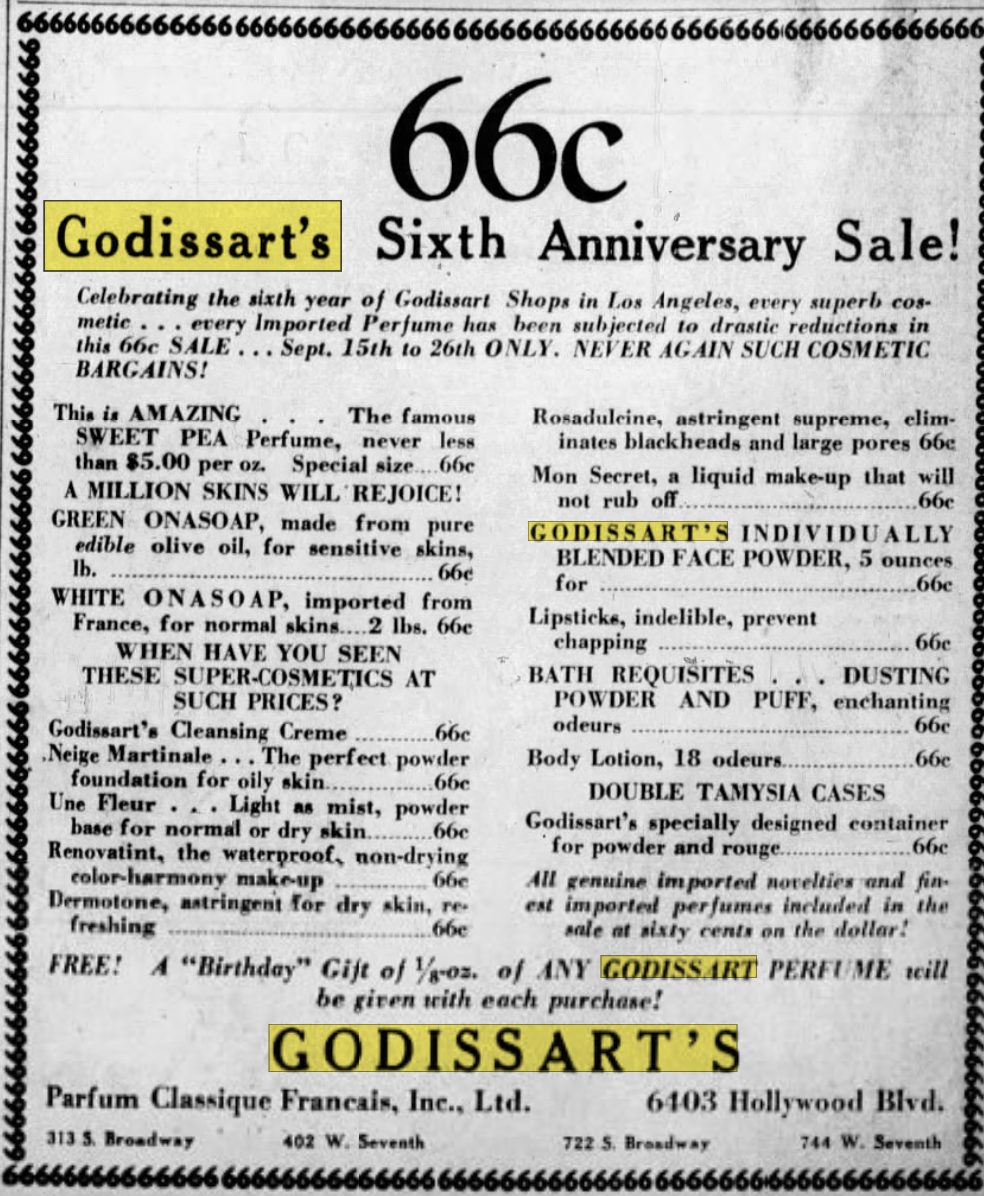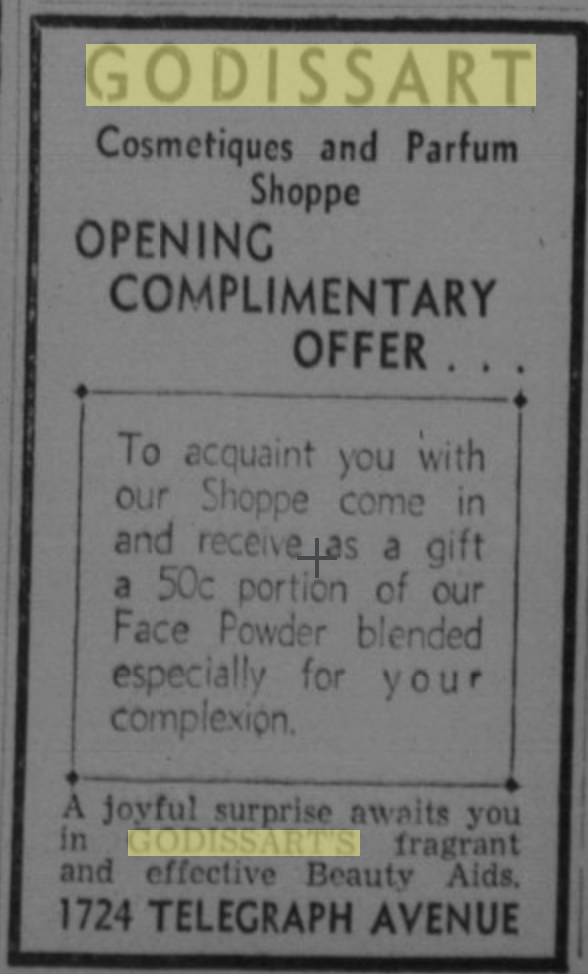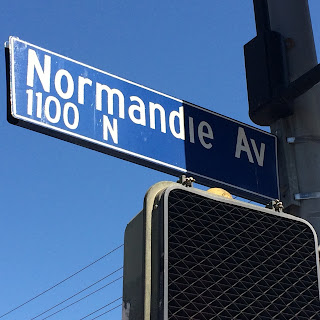Today is my birthday.
What I would like to do is go to a museum.
Specifically, a museum that tells Frenchtown's countless stories.
Imagine, if you will, a surviving 19th century building converted into a museum (in a way that preserves its original bones as much as possible, of course).
Imagine a giant (fiberglass, of course) bottle of
Sainsevain Brothers Wine outside, beckoning visitors and reminding attentive passersby that French-owned vineyards once dotted downtown Los Angeles.
Perhaps there is even a rear courtyard where visitors can see wine grapes growing - Mission, Cabernet Sauvignon, Cabernet Franc, and Sauvignon Blanc (i.e. the varieties
Jean-Louis Vignes grew at El Aliso long before Union Station was built on the site). Replicas of 19th-century winemaking equipment are also on display (we mustn't expose authentic artifacts to the elements!).
Inside, an entire gallery traces California's wine industry from Louis Bauchet and Jean-Louis Vignes through the present day. Bottles, winemaking equipment, and personal effects, carefully preserved behind glass, bear the names Sainsevain, Vache, Mesnager, and Nadeau (among others). Perhaps, if we are really lucky, Pierre Sainsevain's steam-powered stemmer crusher will be on view.
A second gallery tells the overall story of the French in Los Angeles.
Bricks from the zanja madre, surviving pieces of hollow log pipe, and an original iron pipe speak to the struggle for safe, reliable water in Los Angeles and to the forgotten Frenchmen who gave it their all - Jean-Louis Sainsevain, Damien Marchessault, Prudent Beaudry, and Solomon Lazard. Surviving pictures of Sainsevain's water wheel and the founding members of the Los Angeles City Water Company bring to life the difficulties of hydrating a parched city.
Pharmaceutical ads and medicinal packaging speak to LA's early French pharmacists - Chevalier, Viole & Lopizich, and the Brunswig family. Photos and very old medical equipment represent Dr. Nadeau (no relation to Remi), Dr. Pigne-Dupuytren, and the French Hospital.
A wall of old maps, perhaps with tiny LED lights representing the path of the Temple Street Cable Railway, show Prudent Beaudry's massive impact as a developer.
Paul de Longpré's pretty flowers adorn a wall - and perhaps someday the Seaver Center will loan out a few of Henri Penelon's paintings.
A case of antique watches, jewelry, and hardware, alongside modern-day aerospace materials, testifies to the importance of Charles Ducommun, the talented Franco-Swiss watchmaker who founded California's oldest corporation.
The evolution of law and order in Los Angeles might be seen in a case displaying photos of the Lachenais lynching, Judge Julius Brousseau's gavel, and perhaps the badge of Eugene Biscailuz, former LA County Sheriff and founder of the California Highway Patrol.
Perhaps one of Victor Ponet's cabinets has survived. Perhaps it displays milk bottles from the Sentous, Alpine, and Pellisier dairies. (Heck, I'd be happy if one of Ponet's
coffins survived and was in decent enough condition for display.) And perhaps a copy of the Doors' album "Morrison Hotel" - built on Ponet's land - hangs on the wall, linking long-forgotten LA with still-in-living-memory LA.
A sizable wall case shows glassware, dinnerware, menus, matchbooks, and other items from French-owned restaurants. I just might be thrilled to death to point out the glasses from Café de Paris that are on permanent loan from my personal collection*. But we all know Philippe Mathieu, creator of the French Dip, is going to be the star here (even if he did move back to France when he retired).
One unique display stacks fruit crates high, with labels reading Model, Basque, Daily, Popular, and Golden Ram. Next to the stack? If we are very lucky, a surviving jug from Bastanchury Water - since all of those brands were based on the Bastanchury family's enormous orange grove in Fullerton.
Surviving pictures and the odd schoolbook speak to LA's French educators, ranging from Father Lestrade and his boys' boarding school to Madame Henriot and her Francophone private school to the modern-day Lycée Français. Perhaps there is even a clipping from one of the olive trees used to create olive oil in a contest at Caltech during Dr. Jean-Lou Chameau's tenure.
World War One is recalled, perhaps, by a rare surviving plaster statuette of Pedretti's Doughboy (sold to raise funds for the statue), Lucien Brunswig's dispatches from war-torn France, Georges Le Mesnager's correspondence with General Pershing, and artifacts from the many French war-relief organizations headquartered in LA (and, probably, chaired by Brunswig). Perhaps there is even something that belonged to Dr. Kate Brousseau, who used her brilliant bilingual mind and Ph.D in psychology to rehabilitate traumatized soldiers.
Perhaps there are still surviving items from the City of Paris - LA's biggest and best early department store. Perhaps they could be artfully arranged into a life-size diorama of a fashionable, well-to-do lady's boudoir, circa 1880.
Maybe, just maybe, an entire wall could be "papered" with blown-up images of the city's forgotten Francophone newspapers - Le Progres, L'Union, L'Union Nouvelle. (There was reportedly a fourth paper early on, called the Republican, but I will be very surprised if there are ANY surviving copies.)
One of those newspapers was still being published in the 1960s. Just saying...
Remi Nadeau, quite possibly the greatest Angeleno who has been forgotten by the remote frontier town he helped to turn into a world-class city, really deserves his own gallery (if not his own museum). But even
one case of artifacts would be a damn good start.
In the middle of it all, I for one would love to see a scale model of early downtown LA - which, with a little magic from projectors, can layer "LA now" over "LA then" when a switch is flipped.
Perhaps a third space - a small theater - showcases French Angelenos in film. Any surviving scraps of film shot at Blondeau's Tavern - Hollywood's first film studio - segue into the stunts of aviatrix Andrée Peyre, cut to Claudette Colbert, and perhaps finish up with Lilyan Chauvin (who went on to teach at USC). It would be a no-brainer to use the space for special screenings, too.
I have so many more people, places, and accomplishments in my
list of future blog posts that I won't even try to list them all here.
But here's the problem...
I can't go to this museum.
It doesn't exist outside of my own head.
Chinese Americans make up 1.8% of LA's population (county-wide, the number rises to 4%). They have their own museum AND the Chinatown Historical Society (both of which, by the way, are based in buildings constructed by French immigrants).
Mexican Americans make up 32% of LA's population. They have their own museum.
Japanese Americans make up 0.9% of LA's population and have largely spread to the suburbs (hello, Torrance!). They have their own museum.
African Americans make up 9.6% of LA's population. They have their own museum.
Los Angeles' itty-bitty Little Italy (try to say THAT three times fast) grew out of Frenchtown (two of the French Benevolent Society's founding members were Italian), vanished during the war, and is now part of Chinatown. They have their own museum.
Should these ethnic groups all have their own museums?
Of course they should. They are all a part of LA history and they all have their own stories to tell modern-day Angelenos (and whoever else is listening).
For a good chunk of Los Angeles' history, the city was 20% French. Until sometime around the turn of the 20th century, only Californios outnumbered them.
I have written about the founders of California's wine industry, humble hoteliers (wait until I get to the fancier ones), a pharmacist who threw himself into supporting World War One, a renegade general, entire families of ranchers, LA's first struggling artist, and the city's first priests.
I have barely scratched the surface. There are HUNDREDS of stories left to tell.
And one doozy of a question to ask:
Why doesn't Los Angeles have a French-American Museum?
I've previously addressed the fact that the Pico House hosted a temporary exhibit on French Angelenos in late 2007/early 2008. But it lasted less than six weeks, ran during the busy holiday season (not a time when most people want to go to museums), and has, of course, since been forgotten (go on, ask anyone who isn't French if they remember it...I'll wait).
The forgotten French community in Los Angeles deserves to be remembered just as much as every other ethnic group that has ever made a home for itself in LA. We deserve our own museum - a permanent one.
Alas, I don't have the funds or the connections to do this myself.
Can anyone spare several million dollars (damn LA real estate) and a resourceful curatorial staff?
*I do indeed own glassware from the shuttered French-owned Café de Paris in Hollywood (an extremely lucky flea-market find). And if a French-American museum ever does open its doors in Los Angeles, I'll happily - enthusiastically, even - loan out some of those glasses. I'll lead tours, give lectures, you name it. I want our stories told.
















































